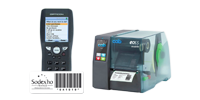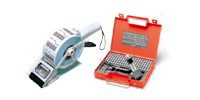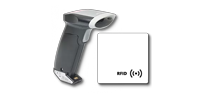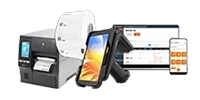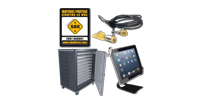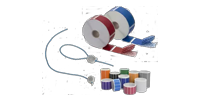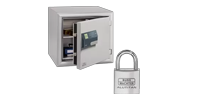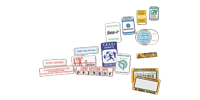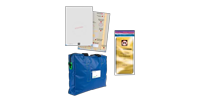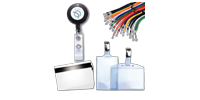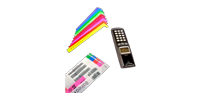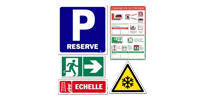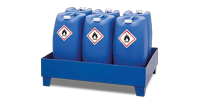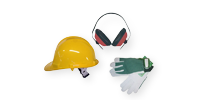The textile and clothing industry produces large quantities and needs to ensure the traceability of large stocks. That’s why companies in this market are adopting RFID (Radio Frequency Identification) to streamline their operations and improve performance. Find out more about the benefits of this technology in this article.
How do RFID textile labels work ?
An RFID tag consists of a chip that stores data about the product (reference, origin, composition...ect). Thanks to this radio frequency chip, the data stored in the label can be read automatically using an RFID transmitter such as a reader. It is then recorded in computer files with little or no human intervention.
To learn more about RFID technology, see our article: "Understanding RFID in 10 points".
What are RFID tags used for in the textile industry?
RFID tags enable better control and visibility of the supply chain (production, storage, sales). Textile companies that have to manage large inventories have a vested interest in adopting this solution to be more efficient by reducing costs and saving time.
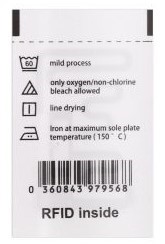
Here are the many benefits of these labels:
- Data storage: RFID tags can store more data than barcode labels. In addition, this data can be read and changed at any time
- Improved quality: RFID can identify returned or counterfeit products by tracking goods from manufacture to storage.
- Better stock control: The RFID tag can be used to locate the product in a shop’s stock, for example, which saves time and anticipates restocking. In addition, it allows the inventory to be taken as and when sales or returns are made because the data is automatically updated in the stock files.
- Durability: Contrary to traditional labels, RFID labels are very resistant to handling, external aggression and adapt to all types of environment (humidity, heat, dust, etc.).
- Efficiency and speed: RFID readers can read several RFID tags at the same time and from a distance, unlike traditional barcode labels which are read manually one by one. This optimises the process from manufacturing to sales.
- Data security: Each RFID chip cannot be copied thanks to data encryption. The data is therefore unbreakable.
- Theft protection: The RFID chips are automatically deactivated at the checkout and thus reduce the risk of theft or human error.
- Low operating costs: This technology is expensive but cost-effective in the long run because RFID tags are more efficient than traditional tags. This is because they are less labour intensive and more durable over time so there is no need to change them.
RFID for an optimised customer experience
The textile industry is changing. Indeed, companies want to improve the customer experience by combining digital and physical points of sale to make the shopping experience as smooth and personalised as possible. RFID technology is therefore becoming a must-have to meet these expectations.
We can cite several examples of innovations in physical points thanks to RFID technology:
- Decathlon, Naf Naf, Bonobo, Cache Cache, Bréal or Etam use RFID at the checkout to scan hundreds of tags per minute. The products and their prices are displayed immediately. The checkout process takes only a few seconds, reducing waiting time and making the shopping experience quick and easy. Stock management is also optimised thanks to real-time automation.
- Decathlon, Mango and Etam have implemented connected fitting rooms in some of their shops. Thanks to RFID tags, customers can scan their item in the fitting room and see on the connected mirror the availability of stock, request another size or colour, order the product if it is no longer available, see the composition of the product or view complementary products. If a request is made, a salesperson is alerted via their connected watch and can respond.
The use of RFID is just beginning and the prospects for development are almost endless. Recently, RFID has enabled JD.com, Amazon’s Chinese competitor, to create an "automatic" convenience store where the RFID tags on products are automatically scanned as the customer leaves. The amount of the purchase is deducted directly from the customer’s account thanks to facial recognition.
This technology is very expensive but the return on investment is positive, 9.2% when fully deployed. (source: Accenture study, 2018)
Our range of textile labels and RFID tags
Discover our RFID anti-theft security labels which allow the detection of any theft attempt thanks to their high performance radio frequency antenna and their powerful adhesive. For more security, we can personalise them with your information (logo, text, barcode, price, serial number...).
To complete your use of RFID tags, we offer sew-on or iron-on textile labels to show the composition of your clothes, care instructions, size... ect. For more details on the information to be included, see our article "How to create a textile label".

